I haven’t been everywhere but it’s on my list!
– Susan Sontag
Bar to Belgrade Line
I arrived in Serbia via the Bar to Belgrade train journey, an amazing experience – more information on my last post on Montenegro. I stayed at Hotel Prag in Belgrade which is a decent hotel and great central location.
Belgrade
Belgrade the capital of Serbia, was liberated on the 20th October 1944 and the Flag of Yugoslavia was raised. It was a targeted city through much of history as it sits on the confluence of two rivers – The Danube and The Sava. The Danube is the second largest river in Europe though probably the most important. It connects the Atlantic Ocean to the Black Sea and therefore Asia, very significant for trade though history.
The architecture in Belgrade demonstrates many different influences, Austrian, Turkish and Russian to name a few. In the last century Belgrade has been destroyed 5 times and rebuilt, resulting in the mixture of architecture. A Roman fort was built in the first century and some of it still stands today. Serbia is rich in history though I won’t talk about it too much in this post, I’ll touch on some highlights from my visit.
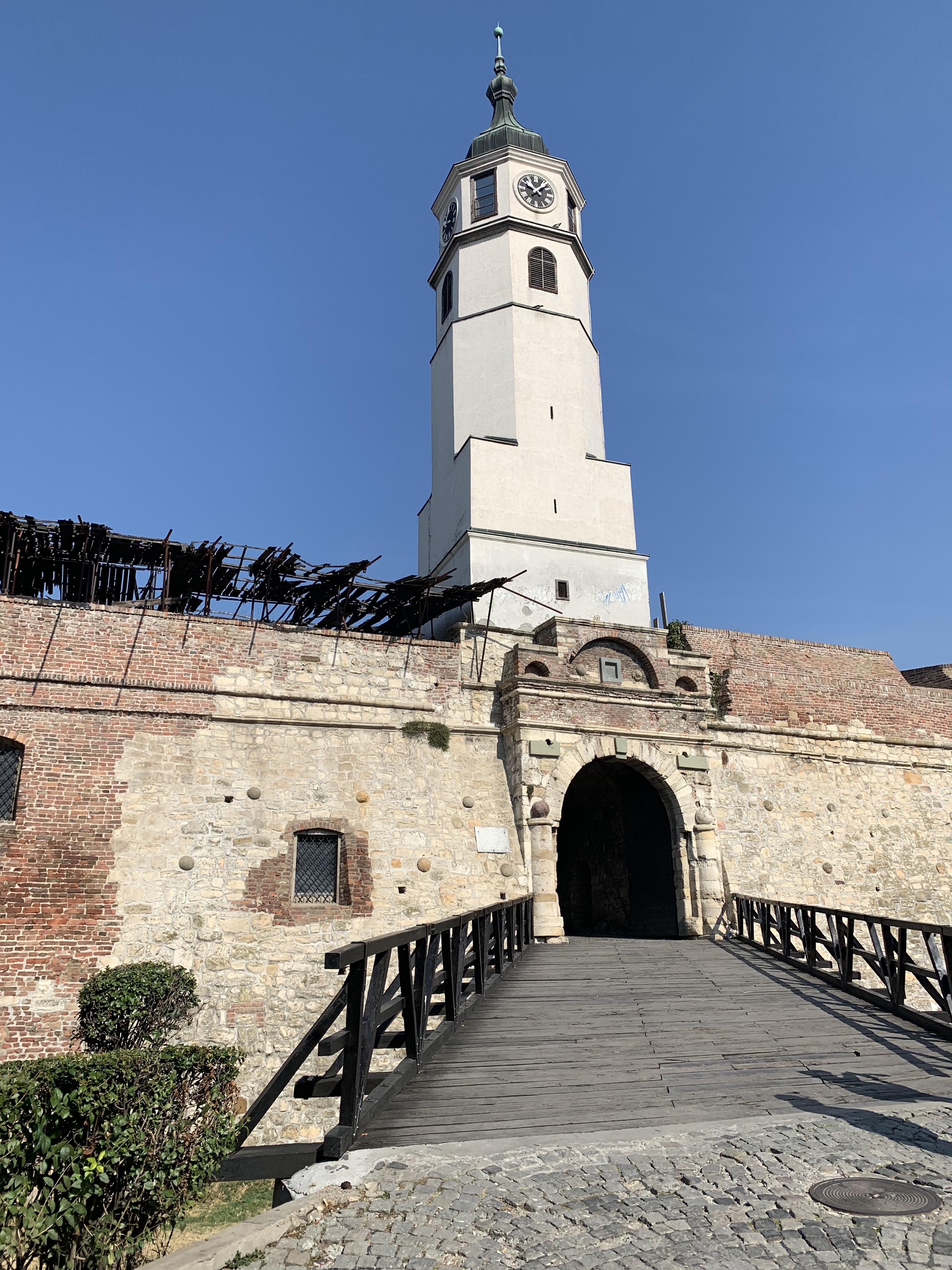
Republic Square is the main square in Belgrade and home to the statue of Prince Michael who ruled Serbia in the 19th century. His father was responsible for regaining Serbia from the Ottoman Empire. Prince Michael liberated 6 major cities from the Turkish. It was agreed with the Sultan that the Turkish soldiers would leave those 6 cities. He is pointing south to highlight the other cities in the South that still needed to be liberated in Macedonia and Kosovo. His horse is standing on 3 legs meaning he was killed. If the horse of a statue is on its 2 hind legs it represents that the rider died in battle. If on all 4 legs, he died of old age. There is a main pedestrian street off of Republic square, and several smaller back streets.

A local Serbian coffee shop, part of a chain the locals rate highly – ‘Better than Starbucks!’ according to the locals. The building used to be a small department store in 1907, and now the coffee shop covers several floors. It stocks great quality coffee, and there’s a barbers and a toilet downstairs!

There are some little electric carts called ‘Sparrow’s’ driving around the city centre. They are free to use and will take you to different parts of the city or your hotel, or the city limits closest to your hotel if you are too far out of there remit. A forward thinking idea and giving something back to people, as well as a bonus for tourists.
One of the highlights of my tour of The Former Yugoslavia was seeing this stylish poodle about town!

Restaurants
Serbia is famed for it’s Kafana’s, a certain type of local bistro that serves alcohol, coffee and food. They usually have live music or performances.
We had dinner in one of them – Zlatni Bokal – and the quality and volume of food was outstanding! It was a traditional Serbian bbq style meal, pork, beef, chicken, sausages, accompanied with fresh potatoes, salad and bread. More meat than you can possibly eat, and all freshly cooked and tasting delicious!
It’s in a bohemian part of town, one of the oldest restaurants in Belgrade and is over 100 years old. Looking at some of the decor you can tell! It has a quirky, quite cool style! I can’t recommend the restaurant highly enough.
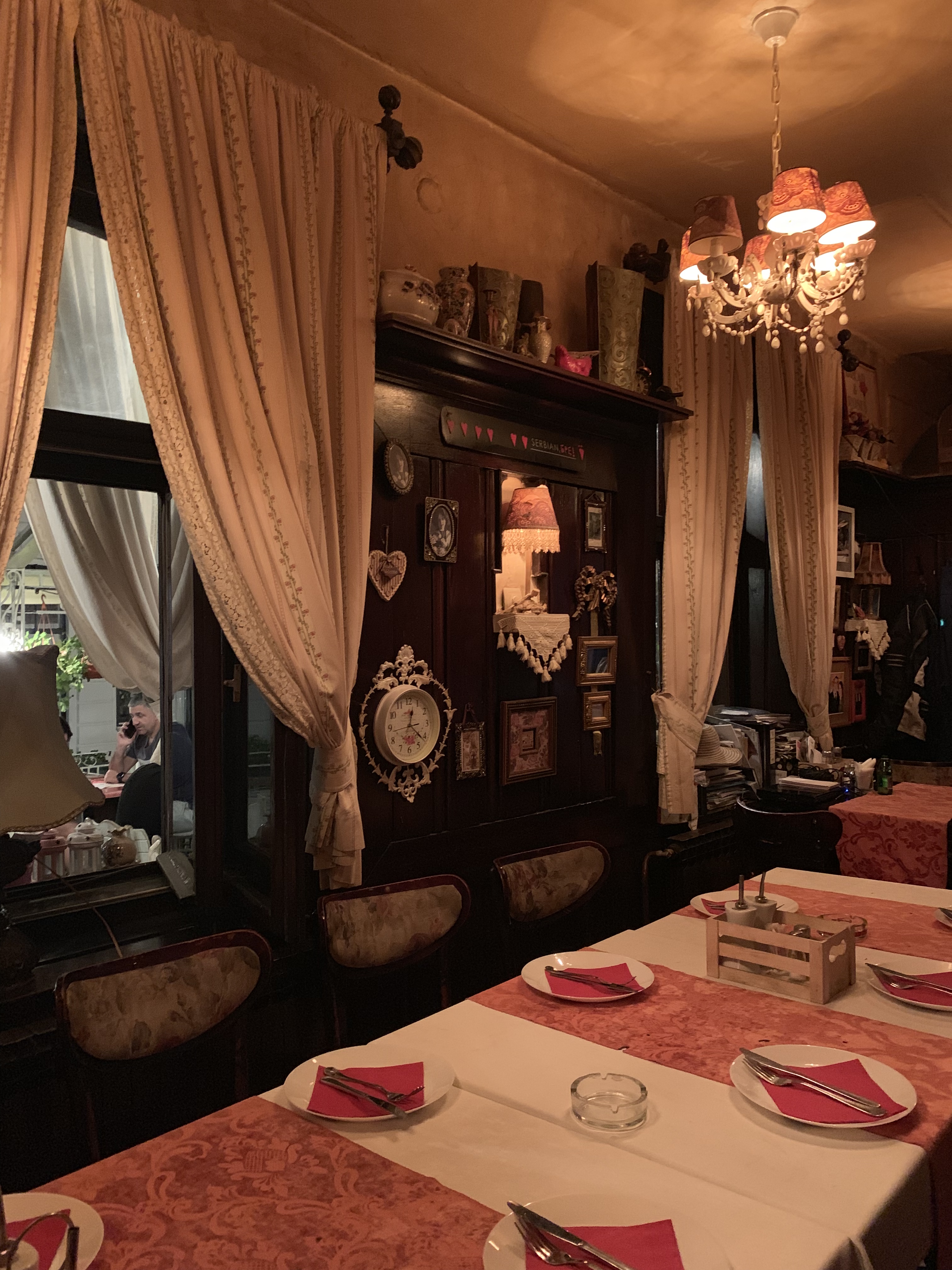
Worth knowing you’re allowed to smoke inside many restaurants. Smoking allowed sign below! The ladies toilets are distinguished from the gentleman’s by the bra on the door!
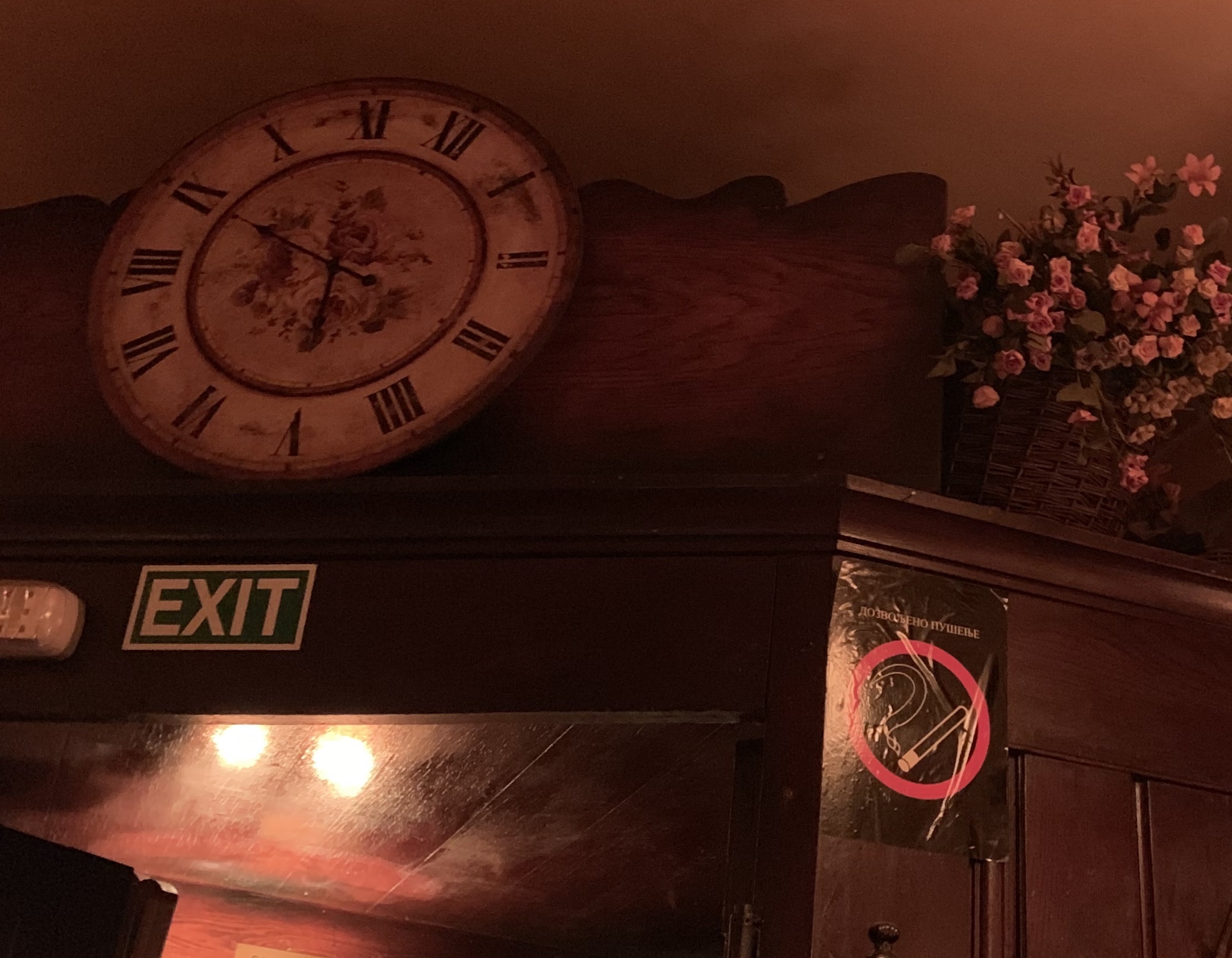
Opposite the Orthodox Church of St Michael is the oldest restaurant in Belgrade. It doesn’t have a name and is simply called ?. Its the oldest surviving house in Belgrade but being near a church people thought it was impolite to have a Kafana where people could eat, drink and smoke. So it was named ?, and is still called that today. I didn’t get chance to eat there but the food is supposed to be good and many locals recommended it.
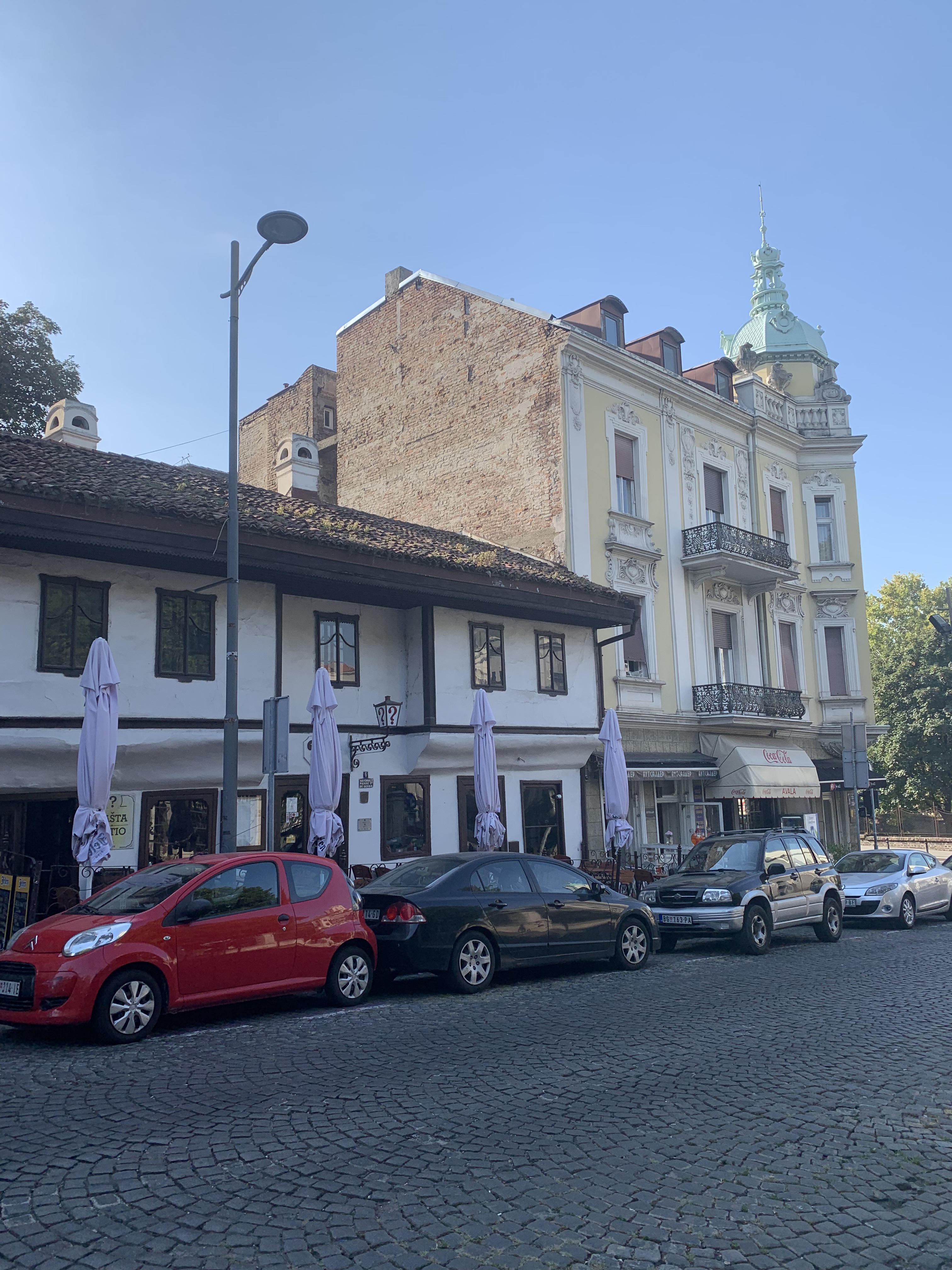
Novi Sad
I got the local bus from Belgrade to Novi Sad – a city in the north of Serbia, in the banks of the River Danube. It takes about 1.5 hours from Belgrade, not the easiest thing getting on the right one, but I really enjoyed Novi Sad so it was worth the effort.
Novi Sad has a lot of mixed nationalities – Serbian, Croat, Hungarian, German, Armenian, Austrian, Greek, Macedonian, and many more. I found the people to be friendly, and more placid than those I came across in Belgrade. It’s a nice chilled out place with a really pleasant vibe, a great place to spend some time. Plenty to see and some nice cafe bars to soak up the atmosphere.

Two famous ladies came from Novi Sad, one was a great mathematician and physicist. She moved to Switzerland, and married Albert Einstein! The other is Monica Seles – the famous tennis player! Novi Sad is also famous for another reason – it’s twinned with Norwich!
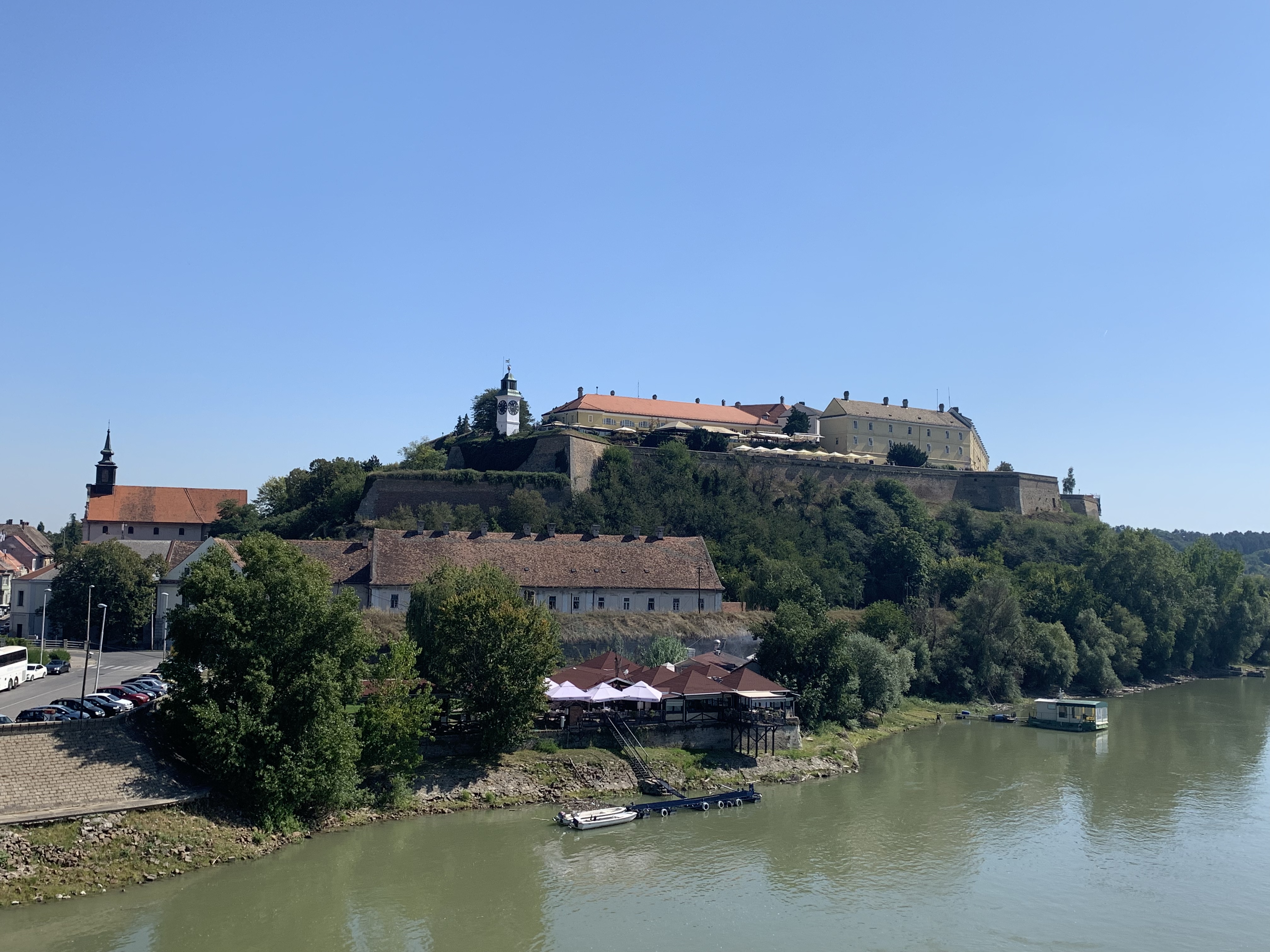
Petrovaradin fortress dates back to the 17th / 18th century and sits by the Danube River. The location gives good visibility in all directions – great for defence, with an iconic clock tower and a complex network of tunnels. It’s some 240 steps up to the top – but worth it for the spectacular view. Across the river is Stari Grad – the old quarter.
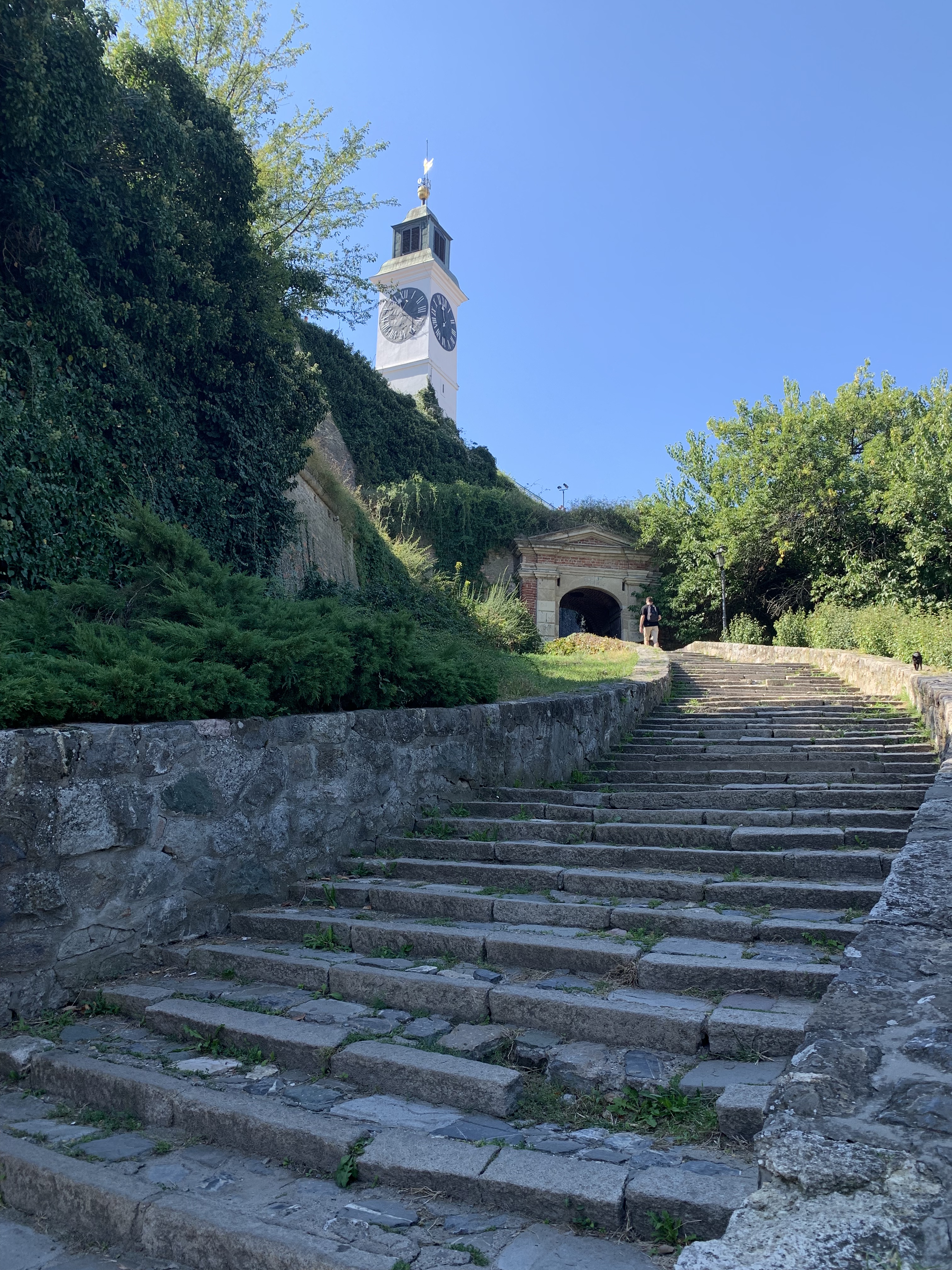
The hands on the clock are reversed making it really confusing to tell the time! Nicknamed the drunken clock! The intention was to be able to see the time from boats on the river. It’s more important to see the hour so they made the hour hand the larger one. It looks like it 9 ‘o’ clock but it’s nearly midday!
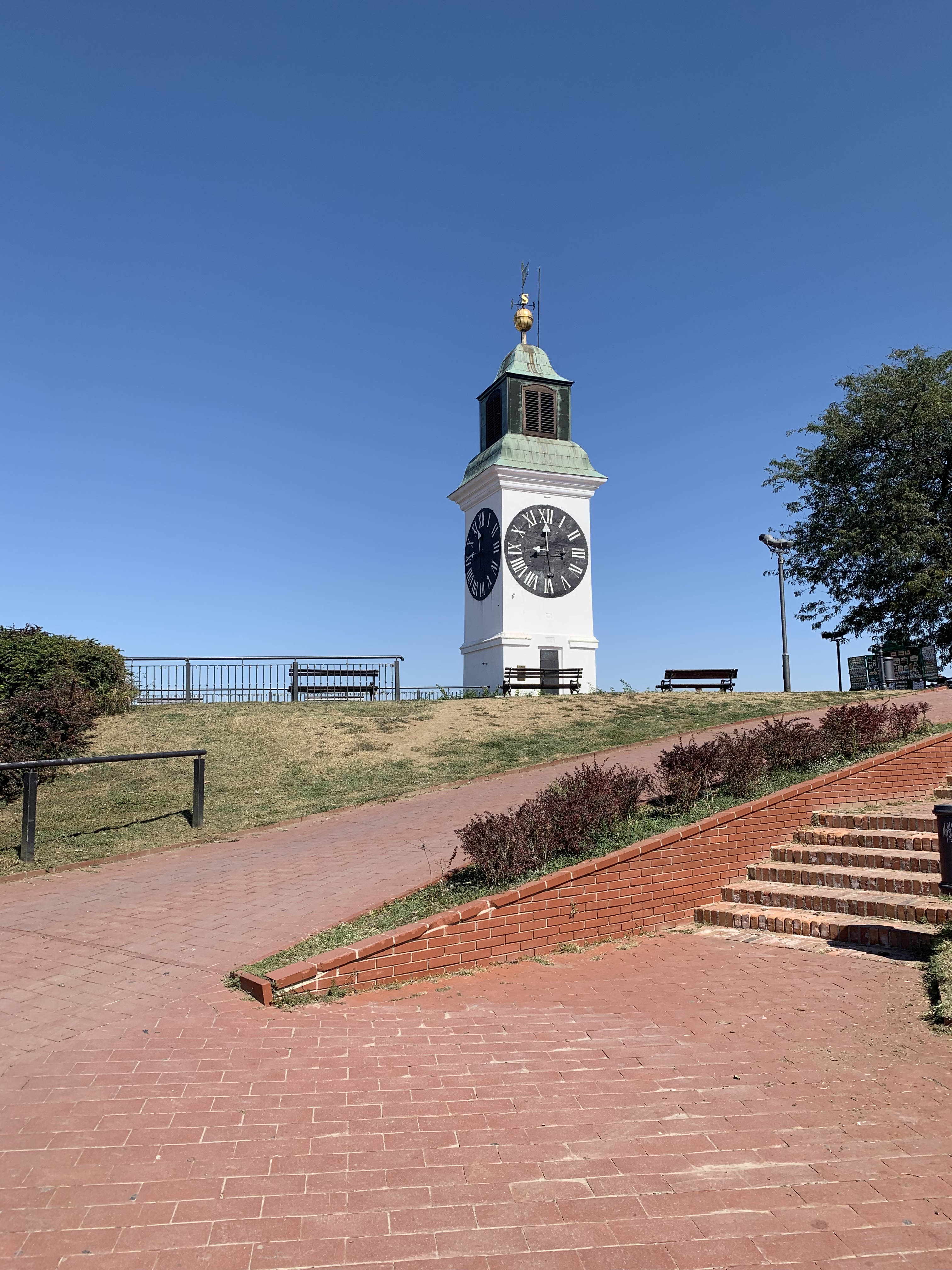
The name Petrovaradin is about unity and broadly means Fortress on the stone, protector of religion. Petra is Greek for stone, Var is fortress in Hungarian and the Turkish word for religion – Din – is also incorporated; to demonstrate that the fortress is about bringing people together regardless of differences.
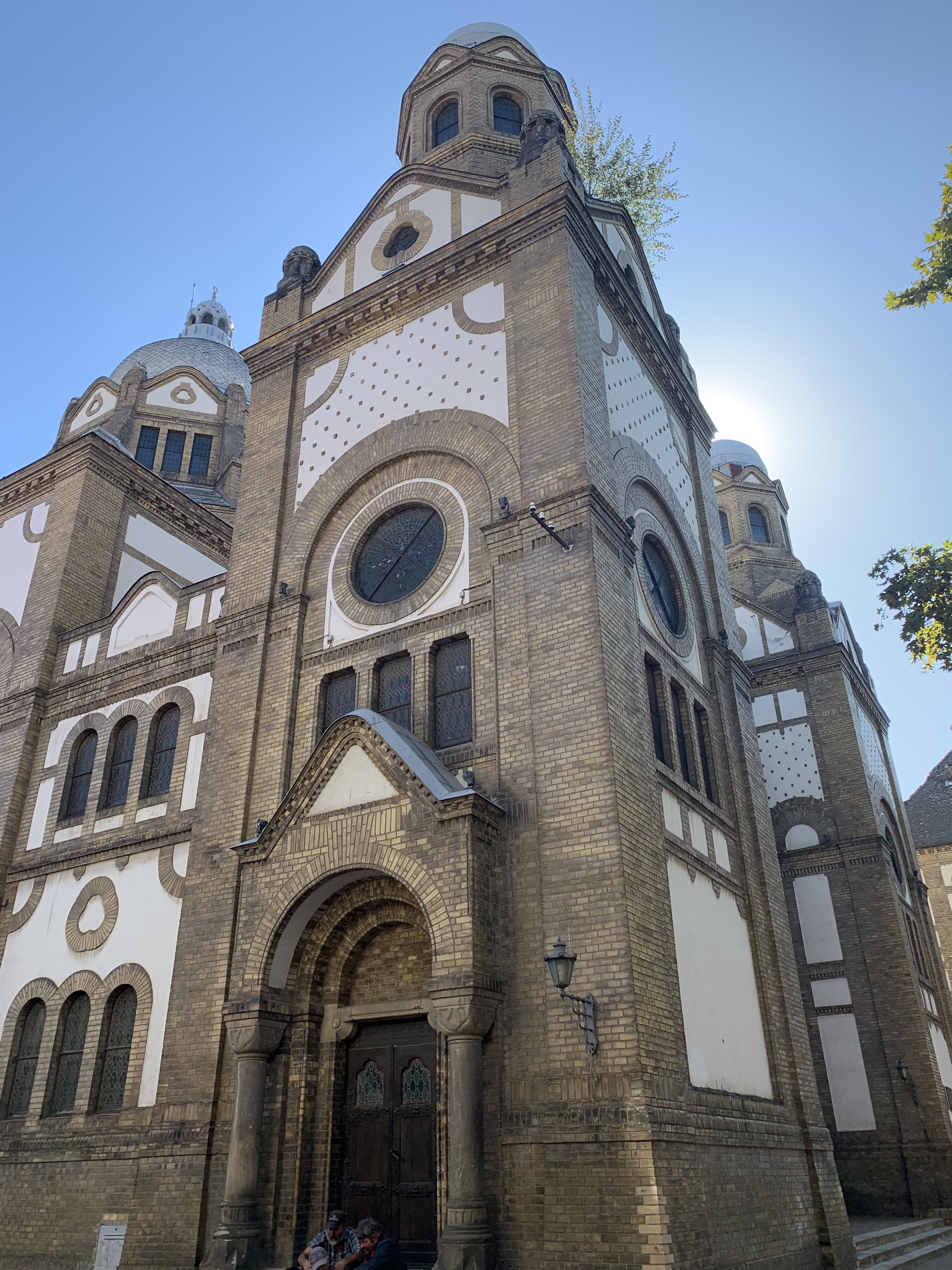
I visited the local synagogue which is free to enter – recommended donation of 100 Dinars. I’ve found they are rarely open to the public so took the opportunity to look inside and it was beautiful.

On April 26th 1944 Jews were deported from the synagogue to Nazi extermination camps.
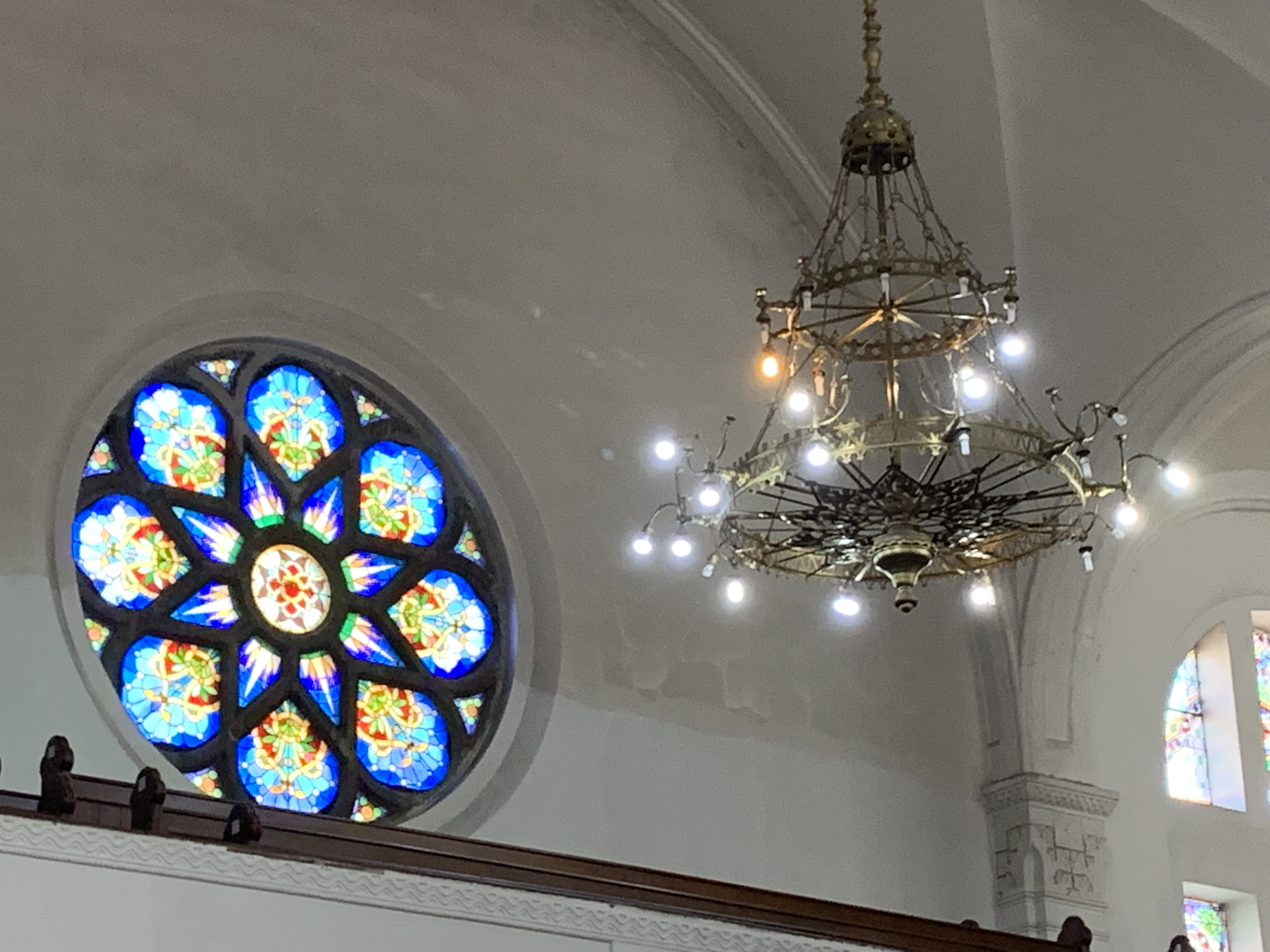
The practical stuff
Serbia has a closed currency and uses the Serbian dinar. One pound sterling is equivalent to approximately 132 Serbian dinars at time of writing. I recommend exchanging unwanted dinars before you leave Serbia. Credit cards are accepted in most hotels and shops and ATM’s are relatively easy to come by. As always I recommend a Starling bank card to withdraw cash whilst there and maximise rates. https://www.starlingbank.com/
It’s safe to drink the local tap water. Serbia is proud of its natural springs. Of Eurpean cities, only Austria has more natural spring water; you can refill bottles from the fountains around town – another nod to being environmentally friendly.
Next stop Macedonia!

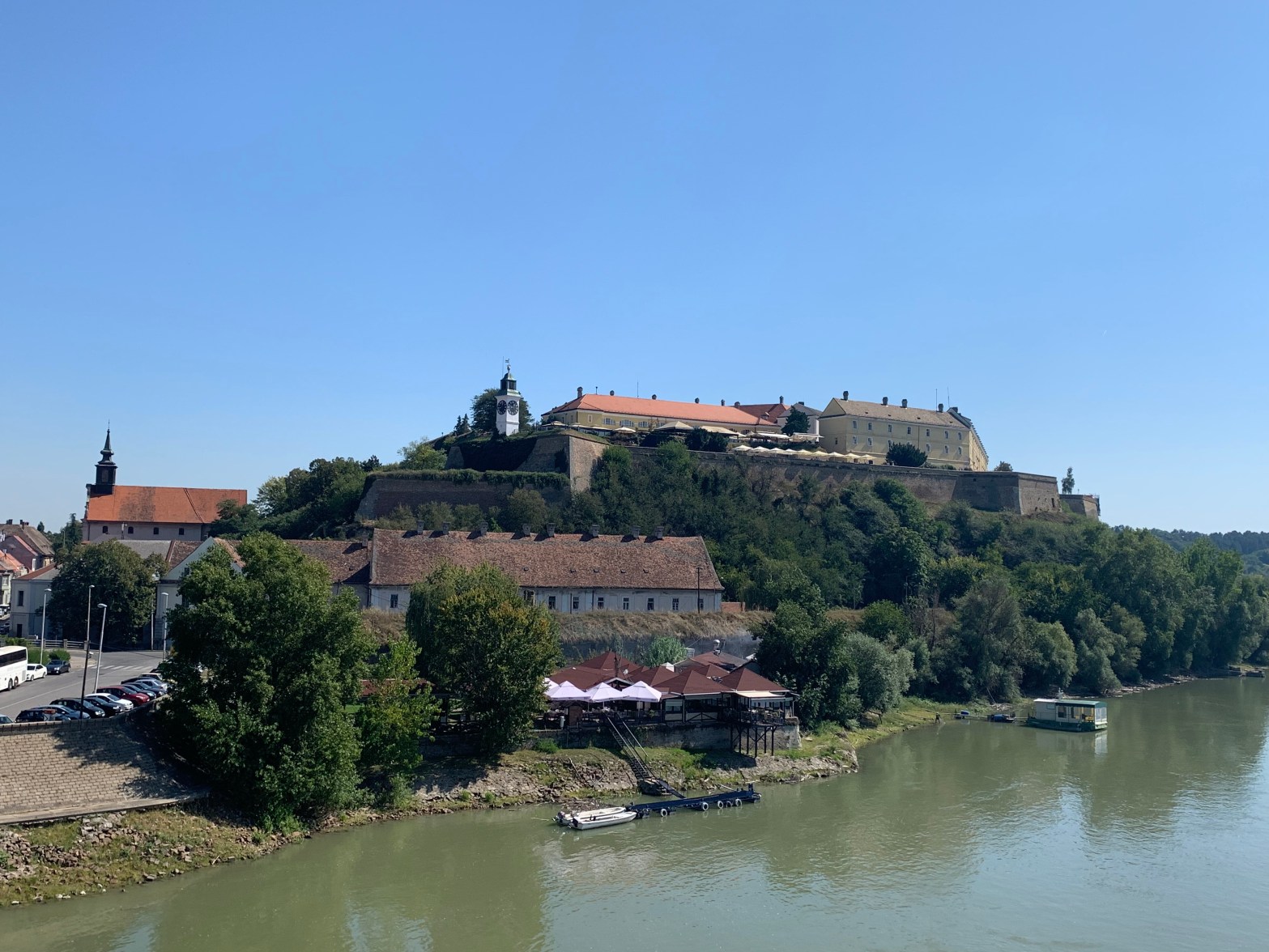
Great post 😊
LikeLike
Thank you 😊
Interesting part of the world!
LikeLike